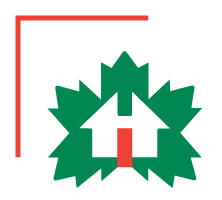A 30 Year Amortization? How It Can Affect Your Payments

A recent post on our social media pages and a couple of paragraphs in an older blog briefly discussed the different between a 15 year and 30 year amortization, and the different between the two of them. In real estate, amortization is an accounting term that refers to the repayment of a loan principal over time. Please not that this blog includes many numbers and a brief political involvement.
More recently, the federal government announced it’s looking to make home-buying more affordable for millennials – and one potential solution would have a noticeable impact on mortgage payments.
Canada’s finance Minister Bill Morneau said last month that there are “multiple things we’re looking at in order to think about how we can help in that regard,” referring to home-affordability issues for young Canadians. However, he did not propose anything concrete in terms of policy options.
However, a prominent newspaper recently reported that Ottawa appears to be considering a move that would allow first-time homebuyers to obtain 30-year insured mortgages, up from the current 25-year limit. The Canadian Home Builders’ Association has discussed policy changes in recent meetings with officials in the Prime Minister’s Office and Mr. Morneau’s office. David Foster, a spokesman for the CHBA, said government officials looked particularly interested in the 30-year amortization proposal.

There is no doubt that any significant policy changes would make monthly mortgage payments less of a burden. But by how much? The newspaper asked rate-comparison website Ratehub.ca to look at the numbers.
Let’s have a look at monthly mortgage payments for homes at three price points:
- $472,000: roughly the national average home price in December, according to the CREA;
- $375,000: roughly the national average home price in December, after excluding Greater Vancouver and the Greater Toronto Area;
- $750,180: the average home price in the Greater Toronto Area in December, according to the Toronto Real Estate Board.
Three levels of down payment were then accounted for. For the two cheaper price points, that included down payments of 5%, 10% and 15%. For the highest price, the minimum down payment is about 6.7%, due to rules for homes that are between $500,000 and $1million. Down payments of 10% and 15% were also used.
All scenarios assume a five-year fixed mortgage rate of 3.74%, a rate commonly offered by Canada’s big banks.

Here’s how the results shook out.
For the $375,000 home, mortgage payments differed from the current 25-year maximum on insured mortgages by about $168 to $189 a month with a 30-year amortization.
For the $472,000 home, mortgage payments differed by about $211 to $239 a month.
For the $750,180 home, mortgage payments differed by about $335 to $372 a month.
What else is included in these results? There are monthly default-insurance payments, which sadly add thousands of dollars in costs over the lifetime of the mortgage.

Obviously, the 30-year amortization plan is a potential solution but far from perfect. The drawback? The total interest paid will be greater than with a shorter runway. Thirty-year amortization periods are currently available to uninsured buyers, or those who make a down payment of at least 20% of the purchase price. In 2012, the Conservative government lowered the limit for insured buyers, or those who make a down payment of less than 20%, to 25 years from 30.
Let’s also not forget 2016, when insured buyers’ lives were made more difficult because of the stress test and their ability to finance mortgage payments at higher interest rates. A similar test on uninsured buyers went into effect in January, 2018. Life became difficult for everyone…







